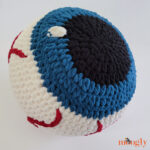Sewing your own quilted placemat or coaster is a simple and rewarding project for beginners. It’s a fun way to add a personal touch to your dining table while learning the basics of quilting and sewing. In this guide, we’ll walk you through every step of creating a beautiful quilt placemat or coaster with easy-to-follow instructions and photo guides. Plus, we’ve included a video tutorial to help you along the way! You’ll quickly learn how to make a beautiful piece for your table.
This tutorial was created exclusively for Pattern Center by professional sewist Natalia Artimenia.
Video Tutorial on How to Sew a Quilted Placemat or Coaster
For those who prefer a visual guide, we suggest starting with a step-by-step tutorial video that will show you how to make a quilted placemat or coaster. In this video, beginner quilters and those looking to master basic sewing skills will learn how to sew a beautiful, handmade project to freshen up your dining table. Watch the full tutorial below:
What You’ll Need
Before we get started, let’s gather all the materials and tools you’ll need for this project:
Materials:
- 4 types of cotton fabric (minimum size: 40 x 40 cm / 15¾ x 15¾ inches). We recommend using a quilting cotton or just fabric scraps you have. You’ll make two placemats with different pattern combinations of them
- Batting (soft, pliable, and up to 5 mm (3/16 inches) thick). The piece of batting size is 30 x 30 cm (12 x 12 inches)
- 30 cm (12 inches) of lace for decoration. It’s optional
- Thread matching your fabric
Tools:
- Sewing machine
- Scissors
- Ruler (at least 30 cm / 12 inches)
- Pins and hand-sewing needle
- Chalk or fabric marker
You can optionally use a rotary cutter with a cutting mat and walking foot, but these tools are unnecessary. We didn’t use them.
Pro Tip: Before you begin cutting and sewing, it’s important to wash and iron your fabric to pre-shrink it. This step helps prevent any distortion later when you wash the finished placemat or coaster.
Cutting the Fabric for 2 Quilted Placemats
Keep in mind that the design of your placemat can vary and be totally unique, depending on the different colors and prints you choose or your personal style. We’ll walk you through one possible combination, but if you’re a complete beginner, feel free to follow it exactly.
When finished, each placemat will be 30 x 30 cm (12 x 12 inches). Here’s how you can cut the strips of fabric for one placemat. The seam allowance is 1 cm (⅜ inches).
- Design 1 (flowers): 4 rectangles (7 x 12 cm / 2¾ x 4¾ inches), 4 squares (7 x 7 cm / 2¾ x 2¾ inches)
- Design 2 (polka dots): 8 rectangles (7 x 12 cm / 2¾ x 4¾ inches)
- Design 3 (blue): 4 squares (7 x 7 cm / 2¾ x 2¾ inches)
- Design 4 (beige): 1 large square (32 x 32 cm / 12⅝ x 12⅝ inches), 4 small squares (7 x 7 cm / 2¾ x 2¾ inches)
These measurements are just a suggestion, so feel free to play with different fabric combinations to make your placemat unique!

Assembling the Pieces
- Start by assembling pieces of fabric — small strips of rectangles and squares:
- Rectangle (flowers) + Blue square
- Beige square + Rectangle (polka dots)
- Rectangle (polka dots) + Square (flowers)

- Join the pieces
Sew two different fabrics together with the 1 cm (⅜ inch) seam allowance. For durability, sure to backstitch at the beginning and end of each seam. Press the seams open to avoid bulk.
- Add lace for decoration
At this point, you can add lace to the right side of one of the fabric squares for a decorative touch. Pin it in place and stitch all perimeter along the edges. Remember to backstitch at the beginning and end of each seam. Press.
- Assemble the squares
Now, we are ready to join the resulting rectangles according to the pattern scheme. Join the rectangles into four larger squares, making sure the seams are aligned. Press the seams open.
You should end up with four identical squares made of three strips each.
- Join the pieces
After assembling the strips into smaller squares, lay them out according to the pattern. Join the two right squares and the two left squares together, keeping the seams aligned. Press the seams open.
- Combine the two halves
Next, join the two larger pieces together along the central seam to form one big square. Make sure the seams match perfectly at the center. Press the seam open.
Quilting the Placemat
- Add the batting
Place the batting on the wrong side of the fabric square, which is the back of your placemat. The batting should be 1 cm (⅜ inches) smaller on all sides to prevent bulk at the edges. Secure it with pins.

- Stitch the batting in place
You can stitch along the seams or secure the batting at the corners of the fabric squares to prevent it from shifting. We show the second way in the video.
- Check the edge width
After assembling all the pieces and sewing them together, check the width of the edge pieces. From the seam to the outer edge, it should measure 6 cm (2⅜ inches). If you notice any unevenness, trim the excess edges as needed.
Finishing the Edges
- Attach the backing fabric
Place the backing fabric (face down) on top of the quilted piece, which means the right sides together. Pin it in place and leave a 5 cm (2-inch) opening for turning the placemat right-side out.

- Stitch around the edges
Sew around the entire placemat, using a 1 cm (⅜ inch) seam allowance. Start and finish the stitching at the opening with a backstitch.

- Turn it right-side out
Carefully turn the placemat right-side out through the opening. Use a blunt tool, like a chopstick, to push out the corners so they are nice and sharp.
Pro Tip: To ensure the corners are square and not bulk, first fold the seam allowances at a 90-degree angle, as shown in the video. Check and straighten them.
Also, smooth the edges of the placemat and the opening. When pinning, ensure there are no fabric overlaps on one side.
- Close the opening
Sew the opening shut by hand using an invisible stitch, inserting the needle into the edge of the fabric. Try to hide the backstitches between the two layers of fabric. Fix the edges of the hand stitching.

- Press and enjoy
Gradually removing the safety pins, press the edges and the entire placemat with an iron, smoothing out any wrinkles.
You’re done!

FAQs
1. What is batting, and why do I need it?
Batting is the middle layer of your quilted placemat. It adds thickness, warmth, and structure. You can use Slimtex, wool insulation, or any soft, pliable batting no more than 5 mm thick.
2. Can I make a smaller version of this placemat as a coaster?
Absolutely! Just adjust the size of the fabric squares and batting to fit a coaster size, like 10 x 10 cm (4 x 4 inches). The process remains the same.
3. Do I need a sewing machine for this project?
While using a sewing machine makes the process faster, you can sew this entire project by hand if you prefer. Just be sure to use small, tight stitches to ensure durability.
4. How can I prevent my placemat from shrinking in the wash?
Pre-washing and ironing your fabric before starting the project will help prevent shrinkage. Additionally, always use a gentle cycle and cold water when washing your placemats.
5. Can I quilt the placemat with decorative stitching?
Yes! After attaching the batting, feel free to add decorative stitching along the seams or throughout the placemat to give it a personal, handmade touch.
Summary
Now that you’ve completed your quilted placemat (or coaster), you’ve taken your first step into the wonderful world of quilting! This beginner-friendly project teaches essential sewing skills, like cutting, piecing, and pressing seams. The best part? You can customize the colors, patterns, and decorations to match your style. Quilting is a creative and relaxing hobby, so feel free to experiment with different fabrics and techniques as you grow more confident. Happy sewing!
We’ll have many sewing tutorials for beginners in our “Sewing” category! Check it out!



